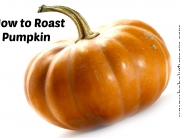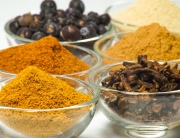Making a Bone Broth
 What is Bone Broth?
What is Bone Broth?
“Broth (or stock) is a mineral rich infusion made by boiling bones of healthy animals with vegetables, herbs and spices.”1 Broth is a highly nutrient dense super food!
Why Bone Broth?
What doesn’t bone broth have? As I researched the benefits and the mineral properties of bone broth, the information regarding the benefits were extensive. Here are a few basic “why’s” to bone broth:
- Calcium2 – important for strong bones and teeth
- Magnesium2 – vital for many needed inner processes including calcium management
- Glycosaminoglycans2 – important for connective tissues, tendons, and joints
- Phosphorus – Bones are made of calcium and phosphorus7
- Amino acids proline – “vital for healthy connective tissue (ligaments, joints, around organs, etc)”1
- Amino acids glycine – “plays extensive roles in digestive health, proper functioning of the nervous system and in wound healing” and “Glycine is also converted into the neurotransmitter serine, which promotes mental alertness, improves memory, boosts mood, and reduces stress”1
- Gelatin (which is made up of proline and glycine) – improves collagen status, thus supporting skin health and supports digestive health4
Uses for Bone Broth
- Broiling vegetables
- Making soups
- Making sauces and gravies
- Adding to curries
- Drinking for nourishment
- Drinking during illness
Supplies Needed for Bone Broth
- Bones
- Water (filtered)
- Apple Cider Vinegar
- 1 Onion
- 2-3 Stalks of Celery (or Fennel)
- 2-3 Carrots
- Can substitute with other root vegetables
- 1-2 Cloves of Garlic (optional)
- Parsley (optional)
- Bay Leaf (optional)
- Sea Salt or Himalayan Salt (optional)
- Freshly Ground Pepper (optional)
- Meat (for added flavor, optional)
- A Stock Pot or a Slow Cooker
- Roasting Pan or 9” x 16” Pan
- Strainer
- Measuring Cup
- Imagination (not optional)
Extra Supplies for Storing Bone Broth
- 2 Ziploc bags – one for veggie scraps, one for bones
- Mason jars to freeze broth
Step 1: The Bones
What Type of Bones Should I Procure?
Deeper broth bones5
- Beef bones with marrow
- Oxtails
- Buffalo bones
- Lamb bones
- Goat bones
- Deer bones
Lighter bone broths5
- Chicken bones
- Chicken feet
- Turkey bones
- Pork bones
- Non-oily fish bones
Where to Find Bones
- Save the bones after roasting chickens, ducks, turkeys, or geese (the best are pasture raised)
- Ask a local butcher for left over bones
- For those of my friends in Italy, here is a breakdown of the words to ask the macelleria (Italian butcher) for bones.
- Coda bovino o coda manzo – Oxtails (Cow tails . . . not the caramel kind)
- Zampe di gallina o piedi di pollo – Chicken Feet
- Ossa di midollo – Marrow Bone
- Ossa di agnello – Lamb bones
- Osso – Bone
- For those of my friends in Italy, here is a breakdown of the words to ask the macelleria (Italian butcher) for bones.
- Find local farmers that let their animals eat grass and request their bones
Roasting the Deeper Bones
“Put the meaty bones in a roasting pan in a 350 degree oven until brown. The roasting will create the irresistible flavor and color you expect in a good broth. If you’re using the meaty bones from a roast you’ve already cooked (like a shoulder roast), then feel free to skip this step. Those bones have already experienced the flavor-inducing Maillard reaction necessary for a good broth.”6
Step 2: The water and the vinegar
The amount of bone broth you can make with the bones is directly related to the amount of bones that you have. A large pot of broth must be filled at least half way with bones or the broth will not develop enough body. If you only have a few bones or just one chicken carcass, you may want to fill the water to just cover the bones in the pot. Using filtered water assures that your stock will receive the least amount of impurities as possible from the water.
Apple cider vinegar
After the bones are added to the pot and you have filled the pot with the amount of water that you desire, then add a ¼ cup of apple cider vinegar to the pot. The best apple cider vinegar is raw and unfiltered so it retains the natural healthy enzymes developed by its fermentation. The acidity of the vinegar begins to release the gelatin, nutrients, and fat from the bones as they sit in the pot. Leave this for an hour before adding heat.
Step 3: Cooking the broth
After the vinegar has had time to penetrate the bones and cartilage, bring your broth to a boil. Once the bone broth is at a rolling boil, bring the pot down to a simmer. As it simmers, you will notice a film begin to develop at the top of your broth. Remove the film from the top of the pot and discard. Repeat this step throughout the process of developing your broth.
How Long Do I Simmer?
Beef broth: 12 – 48 hours
Pork broth: 12 – 48
Poultry broth: 8 – 24 hours
Fish broth: 1 – 2 hours1
The longer you simmer your bone broth the more minerals and
nutrients are released from the bones. See my new post for broth troubleshooting.
Adding vegetables
Two hours before you finish your stock add the vegetables to the pot. The most common vegetables added to stock are onions, carrots, and celery. Add 1 to 2 onions, 2 carrots, and 2 stalks of celery to an 8 quart pot full of water, if you have more broth add more vegetables. Another option for regular bone broth makers is saving the vegetable remnants throughout the week from cooking other recipes and freezing them to use in your broth. You can save little bits of garlic, turnips, tomato, cucumber, green beans, and other vegetables remnants rather than throwing them out. The flavor of your broth will vary upon what vegetables are used, but each vegetable added to the stock adds extra nutrition. This cuts down on waste and adds another traditional kitchen habit to your kitchen.
The finish
At the end of your bone broth making, you can add 1 tablespoon of fresh parsley to your broth. While this adds a fresh taste to your broth, it is an optional step. Leave the parsley simmering in the broth for the last 2 to 5 minutes of your recipe.
Step 4: Straining and storing the broth
Remove the broth from the heat and begin to strain the bones, vegetables, and parsley through a –> colander. If you do not have a colander, you can use a slotted spoon to separate these out. You will want a broth that is relatively free of little bits of food; however, if you added organ meats, you may have extra pieces of liver at the bottom of your broth. This is fine and can be used in soups and stews and is unnoticeable in these recipes.
Storage
To store, allow the broth to cool to almost room temperature and place the broth in glass storage containers such as –> Mason jars, –> Pyrex, or other containers that will hold liquids well. If you wish to freeze your broth, fill the jar leaving at least an inch of space at the top before the jar curves to prevent the jar from breaking when frozen and let the broth sit in the refrigerator until cool before placing the broth in the freezer. You can also purchase –> freezer Mason jars that have no curve and will not break when frozen.
Good Reads
Nourishing Traditions by Sally Fallon
Deep Nutrition: Why Your Genes Need Traditional Food by Dr. Catherine Shanahan
Nutrition and Physical Degeneration by Dr. Weston A. Price
Know Your Fats : The Complete Primer for Understanding the Nutrition of Fats, Oils and Cholesterol by Mary G. Enig
Sources
- Wellness Mama – How to Make Bone Broth
- Twelve Wellness -Bone Stock and Discovering Deep Nutrition
- The Paleo Mom – The Health Benefits of Bone Broth
- Nourished Kitchen – Bone Broth, Broths and Stocks
- Food Renegade – How to Make Beef Broth
- Mark’s Daily Apple – Cooking With Bones
Affiliate Disclosure
I am an Amazon Affiliate and the links included in this post (including some of the pictures) will take you to Amazon. As an affiliate, I get paid when my readers shop from those links. Feel free to shop from the links if you’d like to support my blog, but feel free to shop elsewhere especially locally!
All content belongs to Boholistic Mom, please request permission before reposting. Thank you.









































































































[…] Bone Broth […]
[…] Bone Broth […]
[…] Bone Broth […]